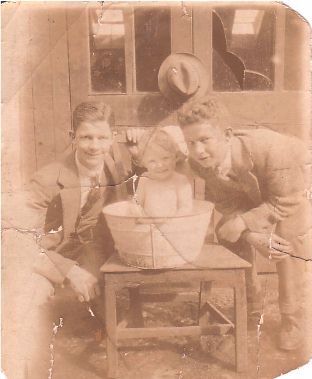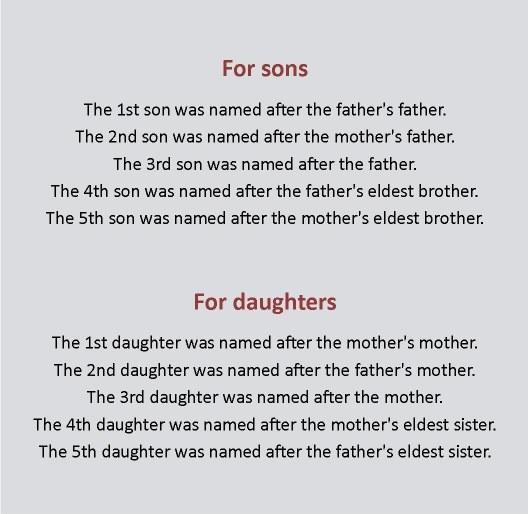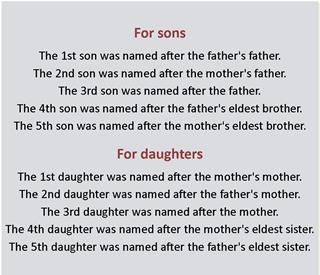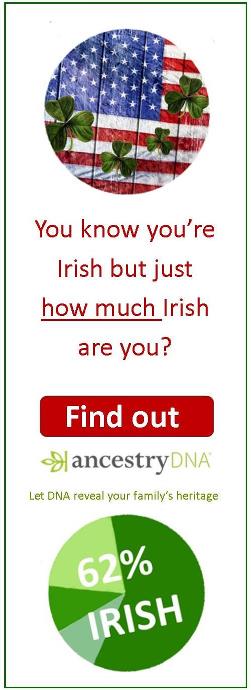- Home ›
- Irish Names
Irish names
Traditional Irish names; naming conventions;
Irish last names; most popular names in Ireland
There's something about Irish names – both first and last names – that people the world over find compelling. And it's not just those with direct connections to Ireland who are fascinated by them.
 Sean and Seamus Ó Dubhghaill (aka John and James Doyle) bathing their little cousin Sean O'Geanin (John Gannon)
Sean and Seamus Ó Dubhghaill (aka John and James Doyle) bathing their little cousin Sean O'Geanin (John Gannon)They only have to be mentioned to have people thinking of the Celts and their rich legacy of glorious myths and folklore, fabulous
art and music and their beautiful Gaelic language.
From this Gaelic language (which is known in Ireland as Irish, not Gaelic) came wonderfully arousing monikers such as Conn Cetchathach, Eochaid Iarlaithe, Cormac mac Airt and Ruaidrí Ua Canannáin.
These are the names that history has recorded, but the ordinary Celts – those who didn't spend their lives going off on epic adventures or slaying aggressors – would have had equally colourful handles.
They were an integral part of the Celtic culture which dominated most of Ireland until the 18th century.
Only then did its light begin to weaken, as you'll see in the brief histories of first and last names in Ireland (links below).
There's a lot of Ireland's heritage wrapped up in the names of our ancestors, so enjoy finding out more on this absorbing subject.
Irish surnames
- A short history of Irish last names plus the 'O' and the 'Mc' explained
- The twenty most common Irish surnames, their meaning and prevalence in the 1850s, 1890 and now
- A random collection of 10 more Irish family names and their meanings.
- An exploration of the Irish surname Ryan, in Ireland and around the world.
- Take an indepth look at the Irish last Hennessy, in all its glory.
- Does anyone know why the Irish Power name became plural in the US?
- Where did the Irish family name Brady originate and what does the name mean?
- Last name Rooney? We are the champions.
- Higgins is an old Gaelic surname. Just you wait, Henry Higgins, just you wait.
Irish names for boys
- Irish boys names A–D, their meaning, history and usage
- Male Irish names E–M, their origins and popularity
- Irish baby boy names N–Z, common and rare.
Irish girls names
- Irish girls names A–D, their meaning, history and usage
- Irish baby girl names E–M include the names of some fiercely strong women of legend
Miscellaneous articles about Irish names
- The most popular names in Northern Ireland in recent years.
- Top Irish boy names in 2021 in the Republic
- Top Irish girl names in 2020 in the Republic
- Irish first names in 1864 – the year civil registration was introduced. Exclusive Toolkit research!
- The history of traditional Irish names, from Celtic origins to 19th century decline and modern revival.
- Irish naming conventions/patterns. See below.
Old Irish
naming patterns
Understanding old naming conventions can be helpful to Irish family historians. Just bear in mind that these conventions were not necessarily adhered to by all families all the time.
However, most families in the 18th and 19th centuries did follow tradition when a child was born, with the result that the same names tend to be repeated generation after generation.
While this can cause some confusion when researching your ancestors, a likely 'mix' of first names can be helpful when faced with a choice of families with the same surname.


Modern usage of Irish naming patterns
Although the practice has largely been abandoned, it is surprising just how recently it was still in use.
Certainly the 10 siblings of my grandfather, Edmond Tierney, born 1903, were baptised according to the convention (he, as second son, was named after his maternal grandfather, Edmond Tobin), but there was a lot of deviation from the pattern when he and his brothers and sisters became parents in the 1930s and 1940s.
Modern usage of traditional Irish naming patterns
Although the practice has largely been abandoned, it is surprising just how recently it was still in use.
Certainly the 10 siblings of my grandfather, Edmond Tierney, born 1903, were all named according to the convention (he, as second son, was named after his maternal grandfather, Edmond Tobin), but there was a lot of deviation from the pattern when he and his brothers and sisters became parents in the 1930s and 1940s.


